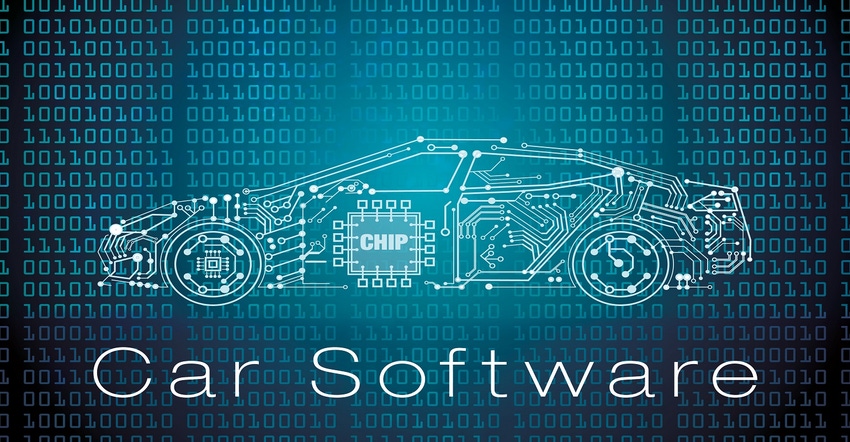How to Build a Better Vehicle with Software
NXP Semiconductors says software is the future in automotive. SDV – software-defined vehicle – is changing car design, production, and operation.
October 26, 2023

The automotive industry is facing a major shift in the focus of its products. The production and design of vehicles is evolving from hardware to software. In the report, Software Defined Vehicles, Deloitte notes that the standardized hardware of smartphones and computers has pushed the industry from hardware upgrades to software development. This is now beginning to happen with autos. While the auto industry still differentiates with the hardware of its products, software is taking on a greater role.
The software-defined vehicles (SDV) concept has become increasingly prevalent. Deloitte points out two impacts: One, the network functions are decoupled from proprietary hardware appliances, enabling parallel physical and digital development of vehicles; and two, the software has become commercialized, maximizing the lifecycle and value cycle of vehicles.
Thomas Brown, solution architect for automotive processing at NXP Semiconductors, believes the focus on software in the automotive industry creates a shift left and a stretch right. The shift left ensures the quality of the software from the beginning, including its availability and flexibility. The stretch right is providing support for the continued update of software in the form of over-the-air (OTA) programming.
These changes impact the use of digital twins and model-centric development in automotive software design, allowing for faster bug detection and continuous improvements through OTA updates.
The industry faces challenges in the transition to software-defined vehicles (SDVs), with OEMs having to deliver continually upgradable service platforms. This requires changes in how vehicles are defined, designed, manufactured, and upgraded.
We caught up with Brown to get his view on building vehicles with a SDV approach.
Design News: Explain the challenges in developing software in the automotive sector.
Thomas Brown: The challenge is not entirely with developing software for the automotive sector – there are currently many well-established methodologies, toolchains, and operating systems to support engineers in delivering functionality into the car. Today’s challenges come from functional safety, cyber security, integration, ownership, and validation.
The challenge in developing software in the automotive sector is not the writing of the code itself. You can ask any automotive software developer how much time is spent on writing code, vs the testing, integration and validation, and documentation required for licensing and certification.
The challenge is also that automotive software developers are still largely distributed across a complex supply chain while OEMs are still creating new central software organizations that can scale.
DN: How do digital twins and model-centric development help?
Thomas Brown: It all depends on what you are modeling. Perhaps the most important model in terms of accelerating automotive software development is the layer of models required to validate a new software over-the-air (OTA) update. Starting from a unit test to the ECU level to the full vehicle integration level and beyond to fleet testing and shadow mode validation, the appropriate certified system design tools need to be in place with the right compromise of model coverage, accuracy, and execution speed.
DN: How do over-the-air (OTA) updates support bug detection and continuous improvements?
Thomas Brown: OTA updates only support bug detection if the underlying system provides sufficient observability to enable the OTA fleet testing. We will see terms like observability and self-awareness used in terms of enabling bug detection and continuous improvements.
Are vehicles becoming software-centric products? What’s the impact on software development?
Automotive is also part of the broad shift in the global economy with a market for digitization, big data, service-based business models, and new forms of mobility. The move from internal combustion engines to battery electric vehicles and changing demographics have also shifted OEM attention from mechanical performance and prowess to one offering the best user experience, sustainability, and safety/autonomy.
DN: How does this change impact the automotive supply chain?
Thomas Brown: OEMs must continue to adopt new technologies, form new technology partnerships, and scale and centralize their software development organization.
About the Author(s)
You May Also Like





